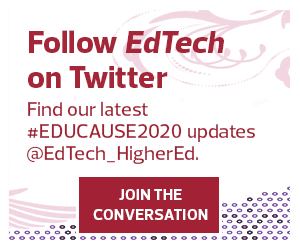Behind the Bot Are Real Emotions and Good Intentions
At CSUN, much of the reason behind using chatbots is student success — particularly for high-risk students. “One of the things we know about our freshmen is that if they drop out after a year or two, they don’t come back, and they don’t get a degree anywhere,” Adams said. “So, the stakes for them are really high.”
Developed by AdmitHub, CSUN’s chatbot is driven by behavioral science, said company CEO Drew Magliozzi. The technology’s behavior and dialogue, he said, was directly informed by students who were asked to answer a question: If you knew someone was struggling, what would you say to help them turn things around?
“The quality of things people said was just so heartwarming,” Magliozzi said.
As a faculty member herself, Adams has seen the chatbot’s effectiveness firsthand. Last fall, she said, all it took was one nudge from the chatbot to motivate an at-risk student to change a behavior — frequently missing tests — that was proving detrimental to her academic performance.
“Students don’t mind the bot,” she says. “They actually listen to the bot. These are people who are really capable of being excellent students. We have to come up with ways to make them feel supported.”
With Chatbots, a Layered Approach is Key to Student Success
One of the greatest benefits of the technology, Adams says, is that it is student-centered and focuses on reaching out to students where they are and in a format they’re comfortable with. “Engaging with students and understanding where they are and what they need rather than assuming you know how to communicate with them is critical,” she explained. “We can’t keep assuming they’ll come to us.”
Part of CSUN’s chatbot success, Adams said, could be attributed to the layered approach the school has taken to implementing and deploying the technology. “It’s not any single piece by itself that’s going to take a student at risk and get them across the finish line. It’s all the things together.” The bot has even shaped how people in Adams’ department communicate with each other, driving them at times to adopt the more casual tone established by the chatbot rather than a more institutional, buttoned-up tone.
Magliozzi said he’d like to see the technology advance to a point where, instead of alerting students to potential failures or shortcomings, it can guide them to the next step for success. “It’s a more complex problem to address,” he says, “but that’s the hope I have for where this technology will go.”
Find our complete coverage of EDUCAUSE 2020, including more interviews and advice from higher ed experts, here.











